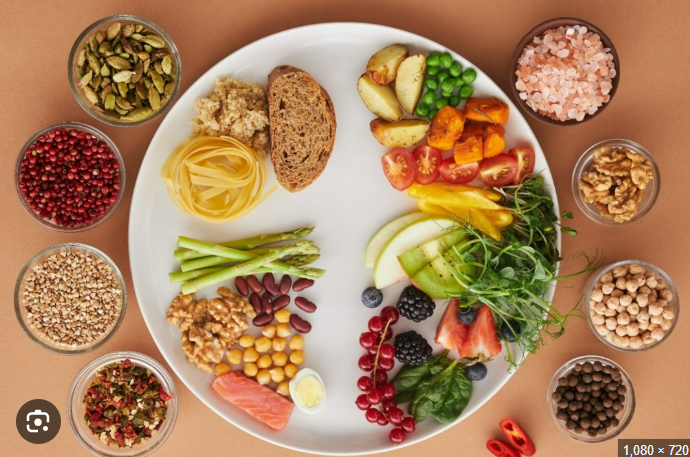
In today’s world, grocery store shelves are stacked with countless food products, each wrapped in colorful packaging that promises “all-natural,” “low-fat,” “organic,” or “sugar-free” options. But how do you know what’s actually good for you? The secret lies in decoding food labels — a task that can be confusing, even for savvy shoppers. Learning how to read and interpret food labels is essential for making healthier dietary choices, managing allergies, and avoiding misleading marketing.
This guide will break down the key components of food labels, explain commonly misunderstood terms, and offer tips to help you confidently evaluate your food purchases.
1. Why Reading Food Labels Matters
Understanding food labels empowers you to:
- Monitor nutrient intake: Track how much fat, sugar, sodium, and other nutrients you’re consuming.
- Avoid allergens: Identify ingredients that may cause allergic reactions or sensitivities.
- Manage health conditions: Make informed decisions if you’re managing diabetes, high blood pressure, or high cholesterol.
- Choose better ingredients: Opt for whole, less processed foods and avoid additives.
- Spot misleading claims: Learn to distinguish between marketing hype and actual nutritional value.
2. The Anatomy of a Food Label
Let’s start with the basic layout of a standard food label. The main components include:
- Nutrition Facts Panel
- Ingredient List
- Serving Size and Servings Per Container
- Percent Daily Value (%DV)
- Front-of-Package Claims (e.g., “gluten-free,” “non-GMO”)
a. Nutrition Facts Panel
This panel provides a snapshot of the food’s nutrient content. It’s typically divided into the following sections:
- Calories: Indicates how much energy you get from one serving.
- Total Fat: Includes saturated fat and trans fat (which should be minimized).
- Cholesterol and Sodium: Too much can lead to heart disease or high blood pressure.
- Total Carbohydrates: Includes dietary fiber and total sugars (added and natural).
- Protein: Essential for muscle building and cell repair.
- Vitamins and Minerals: Often includes Vitamin D, calcium, iron, and potassium.
3. Serving Size: The Sneaky Metric
One of the most misunderstood aspects of a food label is serving size. Many people assume that the nutrition facts apply to the entire package — but in reality, they apply to just one serving.
For example, a bag of chips might list “160 calories per serving,” but a serving size is only 1 ounce — and the bag might contain 3 ounces. That means eating the whole bag gives you 480 calories, not 160.
Pro Tip: Always check both the serving size and the servings per container to understand how much you’re really consuming.
4. Decoding Percent Daily Value (%DV)
The % Daily Value tells you how much a nutrient in one serving of the food contributes to your daily diet, based on a 2,000-calorie diet (the average for most adults).
Here’s a general guide to interpret %DV:
- 5% DV or less: Low
- 10-19% DV: Moderate
- 20% DV or more: High
For example:
- 25% DV of calcium = good source
- 4% DV of fiber = low source
Keep in mind your actual daily needs might be higher or lower depending on your age, gender, and activity level.
5. Ingredient List: What’s Really Inside?
Ingredients are listed in descending order by weight — meaning the first item listed is the most abundant in the product.
Here’s what to look for:
a. Hidden Sugars
Sugar goes by many names: high-fructose corn syrup, agave nectar, cane juice, maltose, dextrose, and more. A product with several types of sugar listed separately may seem healthier than it is because sugar isn’t the first ingredient, even though collectively it might dominate the product.
b. Whole Grains
Look for words like “whole wheat,” “brown rice,” or “whole oats.” If a label says “wheat flour” or “multigrain,” that doesn’t necessarily mean whole grain.
c. Additives and Preservatives
Ingredients like monosodium glutamate (MSG), sodium nitrite, artificial sweeteners (aspartame, sucralose), and food dyes can be controversial. Many consumers prefer to avoid or limit them.
d. Allergens
The FDA requires that the top 9 allergens be clearly labeled: milk, eggs, fish, shellfish, tree nuts, peanuts, wheat, soybeans, and sesame. If you or someone in your family has allergies, scan this list carefully.
6. Misleading Marketing Terms
Food packaging often uses buzzwords that seem healthy but can be misleading. Here are some common ones:
- “All-Natural”: Not regulated. Doesn’t mean organic or free from additives.
- “Organic”: Certified organic foods must meet USDA standards, including no synthetic pesticides or GMOs.
- “Made with Whole Grains”: Could mean just a small percentage of the grains are whole.
- “Low-Fat”: May be low in fat but high in sugar or sodium.
- “Sugar-Free”: Usually contains artificial sweeteners like sucralose or stevia.
- “Light” or “Lite”: Could refer to calories, fat, or even color. Read the fine print.
- “Gluten-Free”: Essential for those with celiac disease, but not automatically healthier for others.
Tip: Never judge a food by its packaging alone — always read the full label.
7. Added vs. Natural Sugars
Sugars can be naturally occurring (like in fruits or dairy) or added during processing. The revised Nutrition Facts panel now includes a line for “Added Sugars.”
Why this matters:
- Natural sugars come with fiber, vitamins, and minerals.
- Added sugars contribute empty calories, increasing the risk of weight gain and metabolic issues.
Recommended Daily Limit:
- Women: 25g (6 tsp)
- Men: 36g (9 tsp)
If a soda has 39g of added sugar, it already exceeds the daily limit.
8. Fiber: The Unsung Hero
Fiber is a critical component of a healthy diet, supporting digestion, blood sugar control, and satiety.
Aim for:
- 25g/day for women
- 38g/day for men
Foods high in fiber include whole grains, legumes, fruits, and vegetables. If the label lists 5g or more per serving, that’s excellent.
Avoid “refined” or “enriched” grains with low fiber content.
9. Fat: The Good, The Bad, and The Ugly
Fat is not your enemy — but understanding the type of fat matters.
a. Healthy Fats:
- Monounsaturated and Polyunsaturated fats (found in avocados, nuts, olive oil, fish) support heart health.
- Often not listed on the label but included in “Total Fat.”
b. Unhealthy Fats:
- Saturated Fats: Limit to less than 10% of daily calories.
- Trans Fats: Artificial trans fats are banned in many countries but may still be present in small amounts. Look for “partially hydrogenated oils” in the ingredient list.
Rule of Thumb: Avoid foods with trans fats and limit saturated fat intake.
10. Sodium: The Silent Risk
Sodium is essential in small amounts but overconsumption is linked to high blood pressure and heart disease.
- Recommended limit: 2,300mg per day
- Processed foods (canned soups, frozen meals, deli meats) are major sources.
A product with:
- 140mg or less per serving: Low sodium
- 400mg or more per serving: High sodium
Check for alternatives labeled “no salt added” or “low sodium.”
11. Protein Power
Protein helps build muscle, maintain satiety, and repair tissue. Most people get enough, but some groups like athletes, vegetarians, and older adults may need more.
Look for 8–20g of protein per serving depending on your dietary needs.
Keep in mind:
- Animal proteins often come with saturated fat.
- Plant proteins (like legumes, tofu, nuts) are lower in fat and high in fiber.
12. Choosing the Right Products: A Practical Guide
Now that you know how to read labels, let’s apply it:
A. Breakfast Cereals
Don’t be fooled by cartoons and “whole grain” claims. Many cereals are sugar bombs.
Look for:
- At least 3g of fiber
- Less than 6g of sugar per serving
- Minimal additives
B. Yogurt
Flavored yogurts often contain as much sugar as candy.
Better option:
- Plain Greek yogurt (add your own fruit or honey)
- At least 10g of protein
- Less than 10g sugar
C. Snack Bars
These often hide under a “health food” halo.
Check for:
- Real, whole ingredients
- Less than 8g of added sugar
- 3g+ fiber and 5g+ protein
D. Frozen Meals
Convenient but often high in sodium and fat.
Look for:
- Under 600mg sodium
- At least 5g fiber and 15g protein
- Ingredient list you can pronounce
13. Smart Shopping Tips
- Shop the perimeter: Whole foods like produce, dairy, and meat are usually around the outer edges.
- Don’t shop hungry: You’ll be less tempted by flashy packaging.
- Use mobile apps: Apps like Yuka, Fooducate, or EWG’s Food Scores can scan labels and provide simplified health ratings.
- Check dates: “Best by” and “Sell by” don’t always mean expired, but freshness can decline.
14. Final Thoughts: Knowledge is Power
Decoding food labels may seem like a chore at first, but it quickly becomes second nature. Once you develop a critical eye for what’s in your food, you’ll be better equipped to make smart choices — for your health, your family, and even the planet.
So next time you pick up a “healthy” snack, flip it around and look beyond the flashy marketing. A little label literacy goes a long way in taking control of your nutrition.
Key Takeaways:
- Always start with the serving size.
- Use %DV to compare nutrients.
- Read the ingredient list for hidden sugars and additives.
- Watch for misleading marketing terms.
- Prioritize foods with fiber, protein, and healthy fats.
- Limit added sugars, sodium, and trans fats.
With this knowledge, you’re not just reading food labels — you’re translating them into better health outcomes.





















